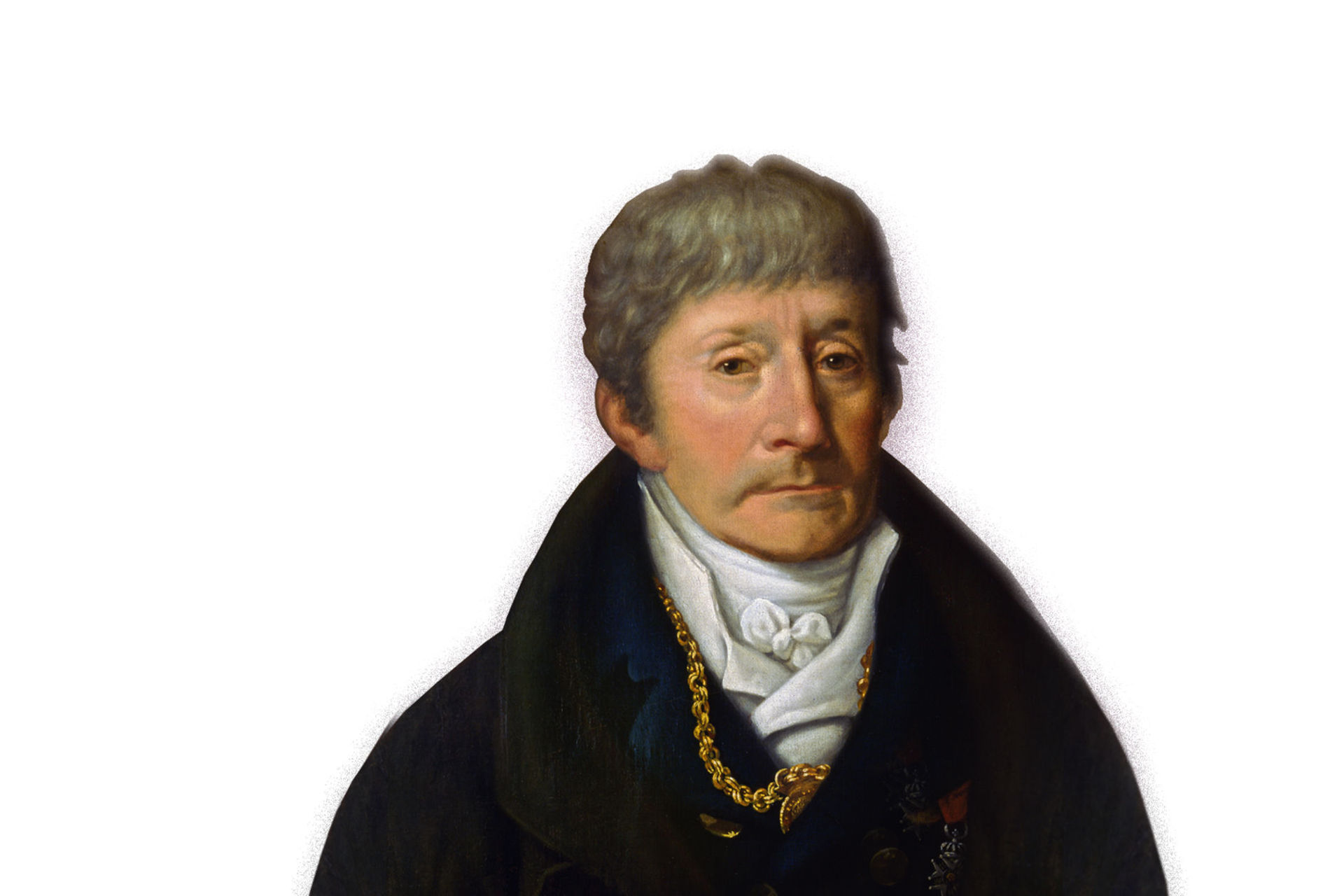Antonio Salieri
Antonio Salieri (Legnago, 18 August 1750 - Vienna, 7 May 1825) Excerpt from Antonio Salieri Cronologia della vita e delle opere [Antonio Salieri, Chronology of his life and works] edited by Elena Biggi Parodi in Europa riconosciuta by Antonio Salieri, Teatro alla Scala theatre programme 2004-2005 season, pp. 246-255. Dates are from Rudolph Angermüller, Antonio Salieri: Dokumente seines Lebens unter Berücksichtigung von Musik, Literatur, Bildender Kunst, Architektur, Religion, Philosophie, Erziehung, Geschichte, Wissenschaft, Technik, Wirtschaft und täglichem Leben seiner Zeit, 3 vol., Karl Heinrich Bock, Bad Honnef 2000.
Antonio Salieri’s family was originally from Angiari, a small agricultural community to the south of Verona: “Bassa Veronese” as it was called, a place of rural enclosures, vast farmyards and the enormous ‘barchesse’ or outhouses , where grain and wheat were stored before being transported to Venice along the dense network of waterways branching out across the plain from the Adige to the Po. It gave the sensation of being close to the Laguna, the Venetial lagoon, even though it was a long way from the sea. When Antonio was born the family moved to Legnago, the largest town in the region and nowadays within the Province of Verona. Legnago formed part of the Venetian fortifications and was the last outpost of the Serenissima Republic, on the border with Mantua. This may explain why Salieri was credited with being Venetian in some of his opera librettos: La partenza inaspettata, La dama pastorella, Il ricco d'un giorno. The Salieri family lived at number 2 Via Disciplina, Legnago's principal street, in a building adjacent to the theatre which now bears his name. The poetic drama Mozart and Salieri, part of Alexander Pushkin's Little Tragedies (1830), was set to music by Nicolai Rimskij-Korsakov in 1898 and later became the subject of Amadeus, a play by Peter Shaffer (1979), on which the film of the same name was based in 1984, directed by Miloš Forman. In these works, the Hofkapellmeister of the Viennese court, decorated with the Austrian Gold Medal for Civil Valour, Knight of the French Legion of Honour, Vice-President of the French National Institute and the Paris Conservatory and member of the Royal Music Association of Sweden, is portrayed as a scheming, mediocre composer and even Mozart's killer. The characters of Salieri and Mozart are employed to demonstrate the shift from the concept of inheritance law (the rights of blood and race), accepted worldwide prior to the French Revolution, to the concept of natural law, which made its way into the popular thinking that formed the basis of political and philosophical debate in the 1850s, through the principle philosophical works, the political articles of Diderot and Rousseau and a growing influx of clandestine publications, i.e. the idea that a person’s value was dependent on his own abilities. The rivalry that existed between Salieri and Mozart served as an affirmation of the romantic new figure of the genius who rises to artistic autonomy by practising his profession freely, as opposed to the figure of the unremarkable choirmaster whose role is predetermined by the power of aristocracy. The contrast is fictitious because it has been demonstrated that no work of art is independent of the world around it - there is no such thing as ‘pure’ music in practice. It is abundantly clear that artists in the Romantic Era were conditioned by public taste. The various duties of the kaiserlichen königlichen ersten Hofkapellmeister included planning and conducting musical events in the court chapel, both sacred and secular, composing a certain amount of church music, and various tasks of an administrative nature, but above all, in his capacity as Director of Italian Music he was responsible for making changes and modifications to the Italian operas that were performed in Vienna.
Whenever Salieri and Mozart met, their relationship was cordial. Considering the power the imperial-royal Kapellmeister held at court, if he’d wanted to outshine the genius from Salzburg he would have put together an entirely different programme from the one he actually directed for the coronation of Leopold II in Prague in August 1791 - a programme almost exclusively composed of Mozart’s music, (three masses: K. 317, K. 337 and K. 258, a chorale in the form of a motet from Thamos: K. 345, and the Offertory K. 222). To portray a positive image of the impending central power, on the evening of the coronation, 6 September, La Clemenza di Tito was performed; an ‘opera seria’ that Salieri himself was asked to compose, but which eventually fell, as we know, to Mozart.
Salieri was active as a composer of operas in Vienna from 1770. From 7 February 1774 he was Kammercompositeur and Kapellmeister of the Italian Opera, and from 12 February 1788 he was Hofkapellmeister, a far more prestigious position than his previous one, which he held until 1824 when he retired on a full-salary lifetime pension granted by the government. A ceremony was held in his honour on 16 June 1816 to commemorate his 50 years of residence in Vienna, which was attended by many of his students. Of all the composers and singers whom he taught, often without payment, around eighty are well-known. These include Beethoven (who took more-or-less regular lessons with him between 1793 and 1802), Schubert (1812-17), Liszt (1822-23), Meyerbeer (around 1812), Hummel (from 1793), Moscheles (from 1810 at least), Czerny, Weigl (1780-87), Siissmayer (from 1788) and Franz Xaver Mozart (around 1807).
The character of Antonio Salieri and his musical works are of particular interest these days to scholars of opera in the period from the second half of the 18th century to the early 19th century, because he was one of the major proponents of musical theatre in Vienna under Joseph II (1766-1790); a complex period influenced by Metastasian opera, comic opera, French Opéra-comique and Tragédie-Lyrique and Balletto pantomimico, the operas that formed part of Gluck’s attempt at reform. Salieri’s musical productions in Vienna were dominated by theatrical works that come under the genre of comedy, but also include German Singspiel and ‘opera seria’ such as Armida (1771), the azione pastorale Daliso e Delmita, the oratorio La Passione di Gesù Cristo and a wealth of theatrical productions for Italy, including Europa riconosciuta (3 August 1778), the inaugural opera production at La Scala in Milan, three French-language theatrical works for Paris: Tragédie-lyriques Les Danaïdes (1784), Les Horaces (1786), an Opéra en cinq actes avec un prologue Tarare (1787), from which Axur re d’Ormus was taken (1788), and the opera seria Idomeneo for the Munich theatre in Bavaria (1782).



